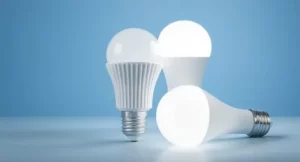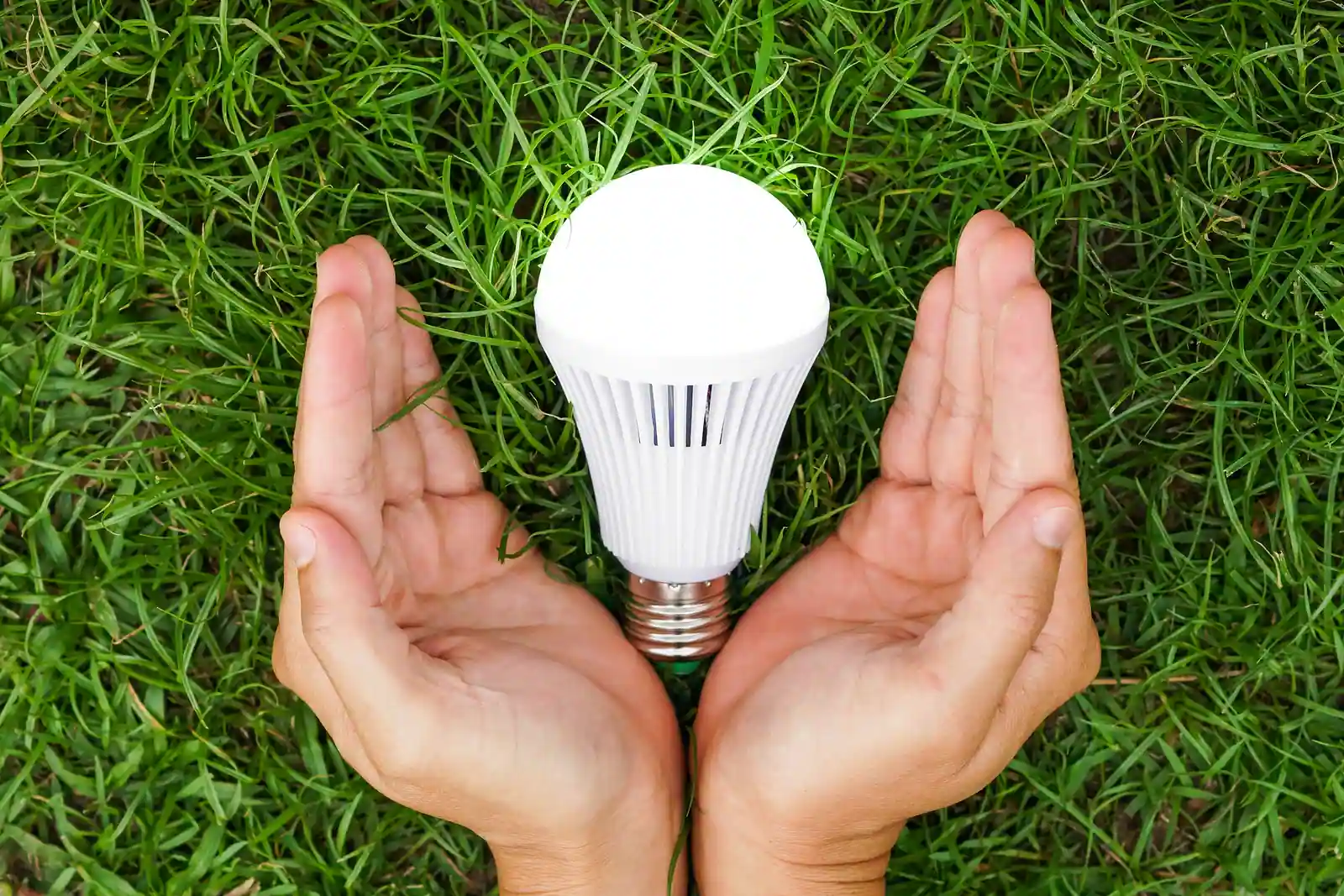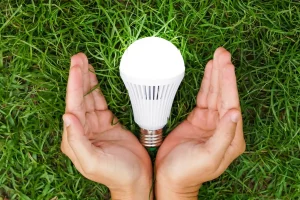Energy-efficient lighting presents significant advantages for homeowners. It leads to noticeable reductions in energy bills while also offering an extended lifespan for bulbs. Beyond cost savings, these lighting options have a positive environmental impact and enhance the quality of light in homes. As property values fluctuate, understanding these benefits becomes essential for homeowners. Exploring how such upgrades can influence both finances and sustainability reveals important insights for any property owner.
Key Takeaways
- Energy-efficient lighting significantly reduces electricity consumption, leading to lower monthly utility bills and increased savings over time.
- LED bulbs have a lifespan of up to 25,000 hours, minimizing replacement frequency and maintenance costs.
- Lower energy demand from efficient lighting contributes to reduced greenhouse gas emissions, supporting environmental sustainability.
- Improved light quality enhances comfort and reduces eye strain, creating a more inviting atmosphere in homes.
- Homes with energy-efficient lighting upgrades often attract environmentally conscious buyers and can command higher resale values.
Cost Savings on Energy Bills
One of the most significant benefits of energy-efficient lighting is the substantial cost savings on energy bills that homeowners can experience. By utilizing LED or CFL bulbs, homeowners can reduce their electricity consumption dramatically. These modern lighting solutions use a fraction of the energy compared to traditional incandescent bulbs, leading to lower monthly utility expenses. As energy costs continue to rise, the financial advantages of adopting energy-efficient lighting become increasingly appealing. Additionally, the shift towards these sustainable options aligns with a growing community of environmentally conscious individuals, fostering a sense of belonging among like-minded homeowners. Embracing energy-efficient lighting not only enhances personal financial well-being but also contributes to a collective effort in promoting sustainability and reducing the carbon footprint.
Longer Lifespan of Light Bulbs
In addition to significant cost savings on energy bills, homeowners can benefit from the longer lifespan of light bulbs when opting for energy-efficient lighting solutions. Traditional incandescent bulbs typically last about 1,000 hours, while energy-efficient options like LEDs can last up to 25,000 hours or more. This remarkable longevity not only reduces the frequency of replacements, which can be a hassle, but also minimizes maintenance costs over time. By investing in energy-efficient lighting, homeowners can enjoy a consistent quality of light without the worry of frequent burnouts. Ultimately, the longer lifespan of these light bulbs aligns with the broader benefits of energy-efficient lighting, making it a sensible choice for those seeking reliability and value in their homes.

Environmental Impact and Sustainability
While many homeowners focus on the immediate financial benefits of energy-efficient lighting, the environmental impact and sustainability of these solutions are equally significant. By adopting energy-efficient lighting, homeowners contribute to a healthier planet while enjoying long-term advantages. The advantages of energy-efficient lighting extend beyond mere cost savings:
- Reduction in greenhouse gas emissions: Lower energy consumption leads to fewer emissions from power plants.
- Decreased energy demand: Efficient lighting helps reduce the overall need for energy production.
- Conservation of resources: Using less electricity conserves valuable natural resources.
- Waste reduction: Longer-lasting bulbs mean fewer disposable products in landfills.
These factors highlight how energy-efficient lighting not only benefits individual homeowners but also fosters a more sustainable community, aligning personal choices with broader environmental goals.
Improved Light Quality and Comfort
The quality of light within a home considerably influences both aesthetics and functionality, making the benefits of energy-efficient lighting particularly remarkable. Energy-efficient lighting, such as LED and CFL options, offers superior color rendering and brightness consistency, enhancing the overall ambiance of living spaces. This improved light quality contributes to greater comfort, reducing eye strain and fostering a welcoming environment for family and guests alike. Additionally, the versatility of energy-efficient fixtures allows homeowners to customize lighting schemes to suit different activities and moods, promoting a sense of belonging. By investing in energy-efficient lighting, homeowners not only elevate their living experience but also align with modern standards of sustainability and comfort, ultimately enriching their home life through thoughtful design choices.
Increased Home Value and Market Appeal
Homeowners seeking to enhance their property’s appeal and value often overlook the substantial impact of energy-efficient lighting. These lighting solutions not only reduce electricity costs but also contribute to a home’s marketability. Prospective buyers are increasingly drawn to features that promise long-term savings and environmental benefits.
Key advantages include:
- Lower utility bills: Energy-efficient lighting considerably reduces monthly expenses.
- Sustainability appeal: Eco-friendly lighting attracts environmentally conscious buyers.
- Modern aesthetics: Sleek, contemporary designs enhance visual appeal.
- Enhanced resale value: Homes with energy-efficient upgrades often command higher prices in the market.
Incorporating energy-efficient lighting is a strategic investment that can elevate a homeowner’s property value while fostering a sense of belonging in a community that values sustainability.
Frequently Asked Questions
How Do Energy-Efficient Lights Compare to Traditional Bulbs in Brightness?
Energy-efficient lights often produce comparable brightness to traditional bulbs while consuming considerably less energy. This efficiency not only reduces electricity costs but also supports sustainable practices, appealing to individuals seeking environmentally responsible lighting solutions for their homes.
Can I Use Energy-Efficient Lighting in Outdoor Fixtures?
Yes, energy-efficient lighting can be used in outdoor fixtures. These lights provide enhanced durability and reduced energy costs, making them an ideal choice for homeowners seeking both practicality and environmental sustainability in their outdoor lighting solutions.
Are There Specific Energy-Efficient Options for Smart Home Systems?
Yes, specific energy-efficient options for smart home systems include LED bulbs and smart switches. These technologies enhance convenience while reducing energy consumption, aligning with the growing trend of environmentally conscious living among modern homeowners.
What Types of Energy-Efficient Bulbs Are Available for Different Fixtures?
Various types of energy-efficient bulbs include LED, CFL, and halogen options, each compatible with different fixtures. Homeowners can choose among these to enhance lighting quality while greatly reducing energy consumption and costs over time.
How Do Energy-Efficient Lights Affect My Home’s Ambiance?
Energy-efficient lights enhance a home’s ambiance by providing softer, warmer tones that create inviting spaces. Their versatility allows homeowners to adjust lighting intensity, promoting comfort and fostering a sense of belonging for family and guests.
Conclusion
To summarize, energy-efficient lighting presents a compelling case for homeowners seeking to optimize their living spaces while promoting sustainability. The significant cost savings on energy bills, combined with the longevity of LED bulbs, makes them an economical choice. Their positive environmental impact furthers the appeal, as does the enhanced light quality that improves comfort and ambiance. Ultimately, investing in energy-efficient lighting not only benefits homeowners financially but also increases property value, making it a prudent and responsible choice for the future.
You May Also Like To Read:










